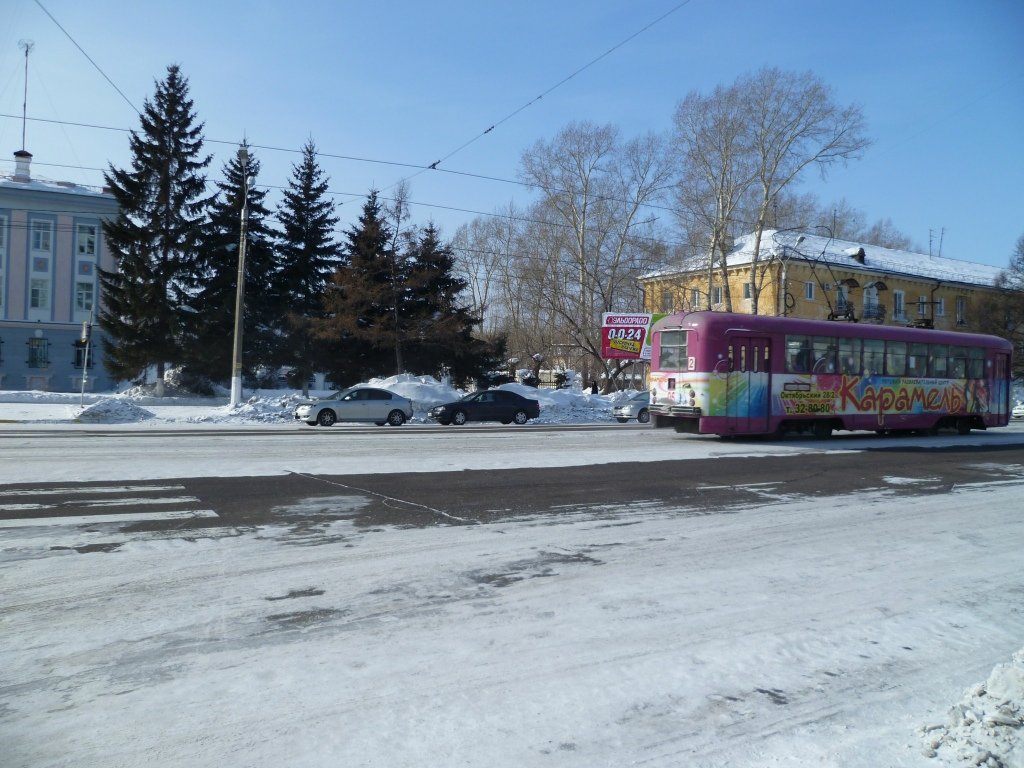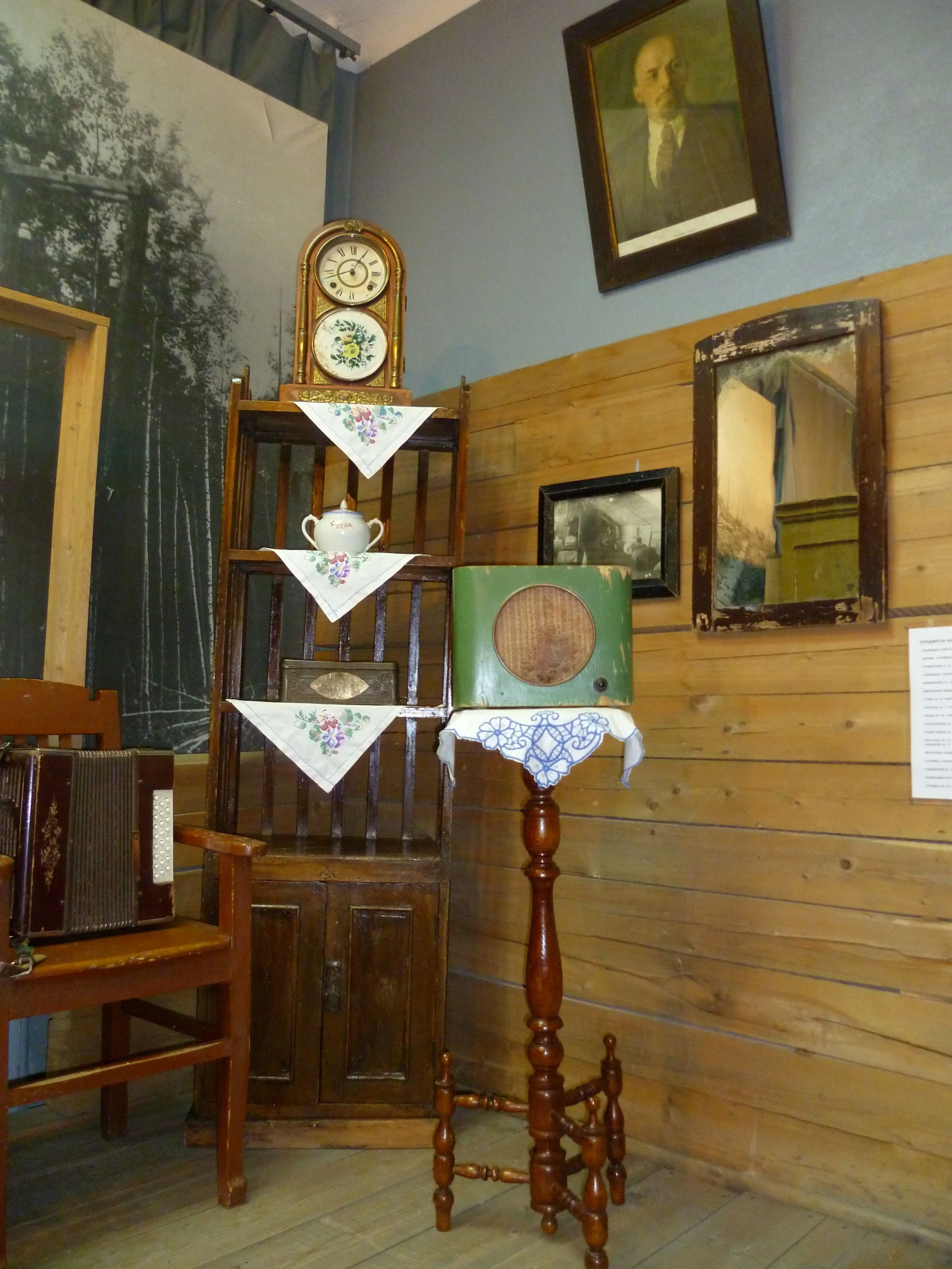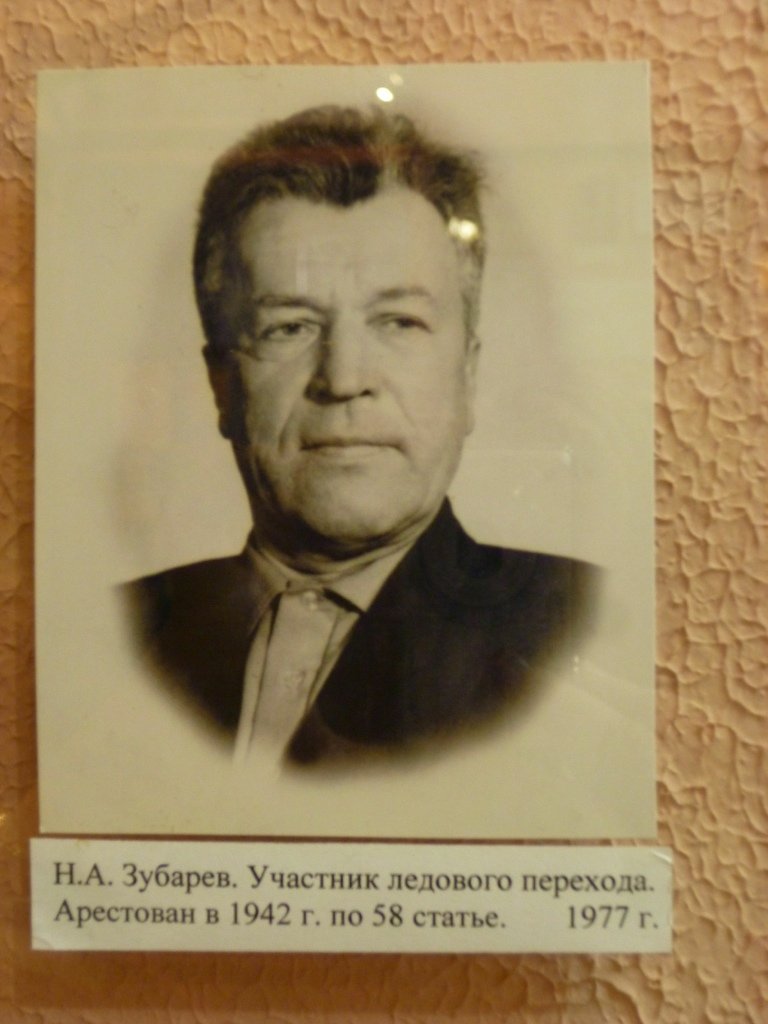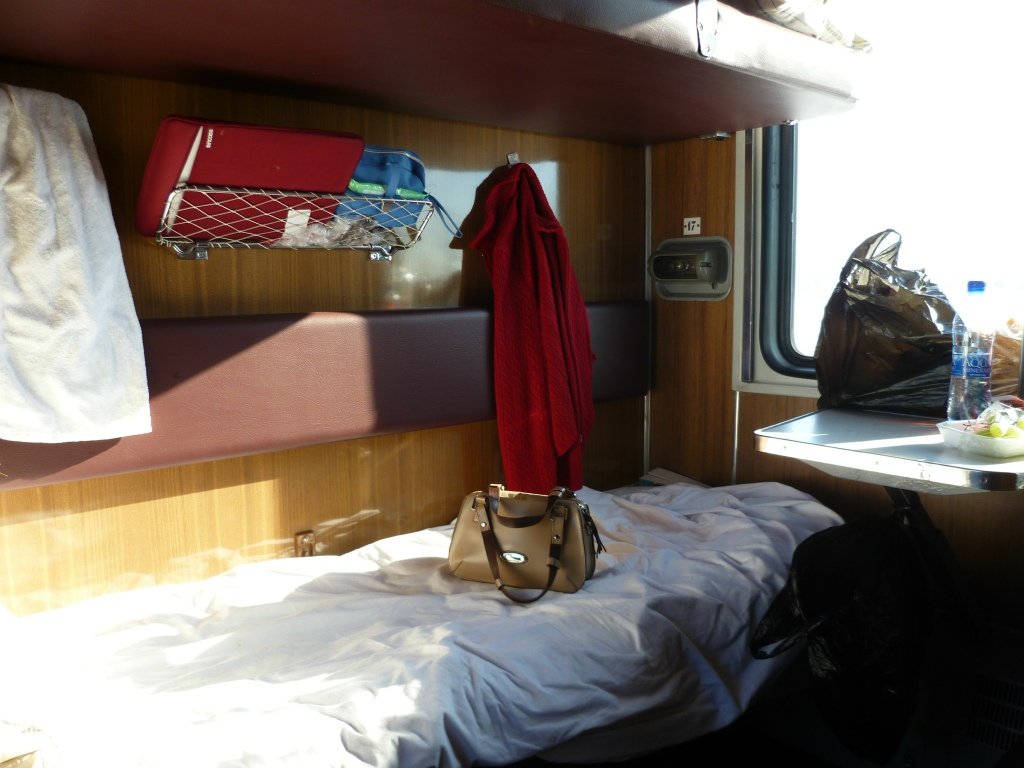Komsomolsk and first day on the BAM
I’m writing this on Friday morning, February 22, in my train compartment. Not sure when I’ll have a chance to upload it!
For my last day in Komsomolsk I had an unambitious plan: go to the city history museum and buy some food for the train. I wanted to walk to the museum because a 40-hour train trip was in my near future. Google Maps said the museum was about a mile away, with just one left turn. So I bundled up and set off!
First, a note about walking. Because of the snow, ice, and bulky winter clothing, walking even a block is a rather physical endeavor. I soon realized my mile walk would be an actual workout. “No big deal!” I said to myself cheerfully. “I need the exercise before my sedentary train journey.
”Well, fuck you Google Maps. Your Komsomolsk-on-Amur directions lack sufficient accuracy.
I wound up walking about an hour and a half, enduring several slippery falls. My hair was drenched with sweat and the strands escaping from my hood iced up. When I entered the museum my hair immediately melted and dripped all over the ticket counter. The ticket lady, shocked that an actual human had come to visit the museum, and a wet one at that, quickly sent me on my way into the heart of the museum. I promptly dripped all over the glass of the first exhibit.
An official-looking lady came up to me and I thought for sure I was in for a tongue-lashing, but instead she said, “I hear we have a visitor from far away in our museum! Please, let me tell you a little these exhibits and answer any questions you have,” with a warm smile and sparkling eyes.
And then she started telling me about the history of Komsomolsk and it’s a lot more complicated than I initially realized. Yes, it was built with prison labor, and, yes, the city was home to a transit center for processing the Gulag’s easternmost prisoners, but it was also a genuinely idealistic endeavor to build a new kind of city for a new, happier, fairer world.
As you can see from the photos below, the center of Komsomolsk is quite lovely, with brightly-colored buildings beautifully adorned with sculptured molding. The museum itself (bottom photo) is in such a building, not far from the banks of the Amur.
But in the beginning, this was just a small town. It’s unclear to me what happened to the indigenous population (although—isn’t it always basically clear what happens to indigenous populations?), but at the beginning of the twentieth century the Czar sent a small contingent of ethnic Russians out to the area on a few expeditions. Some of them stayed and built a little town. Here’s a picture of the picture in the museum of the little town.
After the revolution, the far east of the Soviet Union was constantly besieged by attacks on its eastern border. Japan, in particular, was always trying to take the easternmost areas. The Bolsheviks realized they needed a permanent defense in the area so they dreamed up the idea of converting that small town into Komsomolsk, since it was conveniently located on the Amur river but far enough away from the ever-shifting borders with China and Japan. This city was to have a ship-building-and-submarine factory, an airplane factory, and a steelworks center all devoted to the eastern defense.
In 1932 the first builders sent out to the area lived in appalling conditions, in little huts like this:
All the materials had to be brought in by steamship from Khabarovsk, except for lumber. The lumber hey got by cutting down trees in the taiga by hand with tools like this:
The problem, though, is that the forest was across the river from where the city needed to be and the workers had to figure out how to get the logs across the from river. They wound up cutting a canal through the ice, filling it with water, and quickly quickly quickly (so the water wouldn’t freeze), pushing the logs through the canal across the river. Like this:
The army was sent in to help and to get there they had to walk, WALK!, on the ice from Khabarovsk.
Gradually, they build an actual city. The museum has the personal effects of the very first builders:
But here’s the really startling thing about the building of the city. Within four years of the first construction operation, the city’s factory produced its first submarine. This was 1936. The first airplane was produced there a mere one year later.
The museum covers some of the more tragic aspects of the city’s founding. For example, this man (below) took part in the ice walk from Khabarovsk but was arrested in 1942 as an enemy of the people. As new buildings are built in Komsomolsk, artifacts of the Gulag history are discovered. I took a photo of an exhibit featuring some items found in the areas that had been labor camps, but it didn’t save to disk, for some reason.
The museum’s director had kindly told me all this while she was showing me around. After she left me on my own, the other ladies who work in the museum started following me around trying to photograph my flowery valenki with their phones. Then they’d whisper to each other, “Did it come out? No?” Then they’d stand there until I paused at another exhibit and sneak up me on with their phones. As hilarious as this was I decided to put them out of their misery and said, “Would you like to photograph my valenki? Here, I’ll pose for you!” But apparently this took away their only reason for wanting me to remain in the museum!
The museum supposedly closed at 5, but the ladies were whispering about how they were counting on the fact that there would be no visitors so they could leave early and make it to the grocery store. I got the feeling the museum’s director, who had been so kind and welcoming, had already left because their “hints” became more and more assertive. For example, at about 4:15, they started turning off the lights in some of the exhibit rooms. One of these ladies took pity on me and gave me a little pin from Komsomolsk as a gift, while still intimating that it was really time for me to get the hell out of there.
Reluctantly, I left and started looking for somewhere to sit down. There was no way I was walking all the way back to the hotel, but it’s rare to see an empty taxi just cruising around Komsomolsk. So I walked and walked and walked, passing pet stores, wallpaper stores, clothing stores but no cafés. Finally I went into a place that called itself a coffee shop but looked closed. Inside, it was indeed, a pleasantly-decorated Starbucks-type place with pictures of kittens all over the walls. Their menu was miles long but at least half of it was taken up with the price list for each individual piece of broken glassware. On the table was a little sign warning that the management would not tolerate rough behavior. I got a latte and some blinchiki and tried to figure out how this warm, kitten-adorned little corner of delicious coffee come become a scene of violent, brawling thugs.
The violence-averse coffeeshop staff called me a cab and I got back to the hotel with just enough time to run to the store to get food for my trip. I got to the train station and was having trouble dragging my luggage over the ice and tracks but then a kind man came, picked up both my suitcases and deposited me at my assigned train car.
I was in a kupe with three other men, but the provodnitsa (train car lady) told them to be nice to me. Like 10-year-old boys trying to impress the teacher, they nodded vigorously, saying, “yes, yes, of course.” Two of the guys seemed actually a little afraid of me, constantly checking to make sure they weren’t bothering me. I think they got sick of making sure because they eventually left and went somewhere else altogether. They must have gotten off in the middle of the night because I never saw them again.
The man who remained in my kupe introduced himself as Bogdan, a train machinist who had been on a business trip to Komsomolsk. He was kind, but very mumbly and it was hard for me to understand him. I made conversation the best I could, but between my non-sequitors and physical clumsiness (knocking my head on everything in sight), I think he became convinced that I was slightly retarded.
In the morning, Bogdan was much more intelligible. The night before I had watched him drink two beers but now I think he had had many more before that.
I woke up around 9am and went to wash my face. When I had returned, Bogdan had laid out a whole breakfast spread and was upset that I didn’t want any of it, that it was just too early. Puzzled, he tucked into his sausages and bread, washing it down with a quick cup of tea. Then he pulled out a large can of beer. A few minutes later, a train colleague of Bogdan’s showed up; he was a jolly and roly-poly young guy named Vasya. I could understand him with no problem whatsoever, especially since he didn’t speak in a monotone and used common facial expressions to accompany his speech: raised eyebrows for questions, smiles for jokes, and shoulder shrugs for the frequent “What can you do?” expression. I hadn’t realized how much I rely on these cues to understand the words that are said to me.
So, Vasya brings his own beer and the two of them start to talk train. Bogdan pulled out some more beers, Vasya ran to the cold-drink saleslady and we trudged along eastward. I finally got hungry enough to eat so I had some bread and sausage of my own, which Bogdan may have taken as an affront to his taste in bread and sausages. I offered them both some of mine, but they refused.
We stopped for a bit in a place with cell access. Naturally, we all pulled out our phones and this began what seemed to be an interminable afternoon of, “Rachel! Do you know this song? This is Skillet, I’m sure you know them.” Vasya was very much into this Skillet, whoever they are. Bogdan preferred Europop of some flavor and was surprised that I had never heard of “Vanessa.” This continued until Vasya had read out to me the name of every band whose music he had in his phone. Bogdan fared better in that he was able to find a song I actually knew: “Can’t Touch This.” Oh, the International Language of MC Hammer.
This train is much more like the Russian trains in my past. No biotoilet, no curtains, bedspreads or rugs. But it’s fine. The bathroom is surprisingly warm. Sure, it’s a little odd to watch the toilet flush and see a plume of fog make its way down to the track, the waste traveling on a luge of frozen water, but it’s not uncomfortable.
It’s Friday evening now and my kupe is empty except for me. I’m happy for the time alone so I can veg without having to fend off aggressively generous offerings of sausage and tinny music. This is my little nest:
The landscape outside my window doesn’t change much. It’s snowy taiga for miles on end, or as Bogdan called it, a “cat’s kingdom,” which makes no sense to me. I’ll have to wait until I have an internet connection to look it up.













